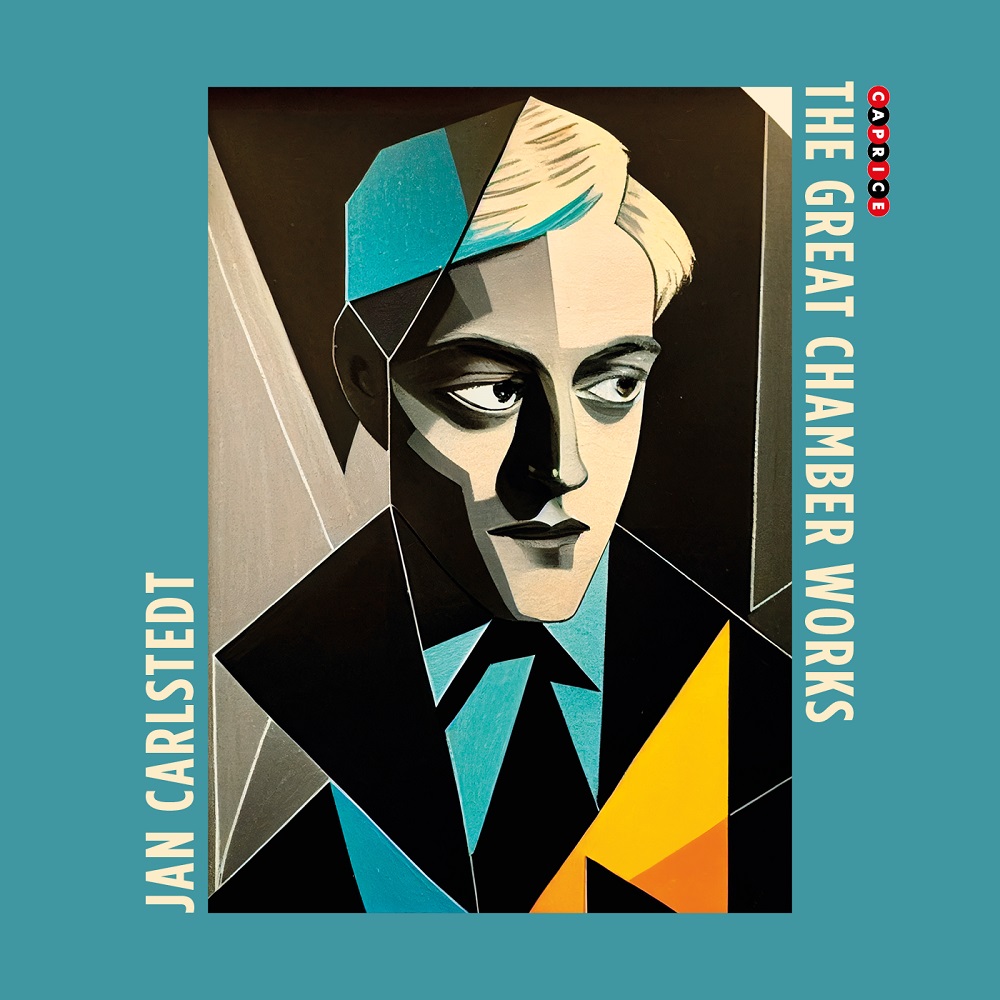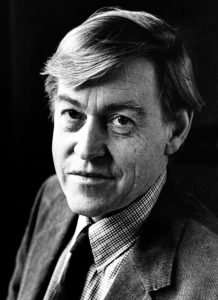Jan Carlstedt: The Great Chamber Works
Trio d’Archi di Roma, The Fresk Quartet, Per Skareng, Georgian State String Quartet, Slovak Quartet
Composer Jan Carlstedt (1926–2004) was one of the foremost Swedish modernists, but has remained woefully underrepresented among album releases. This digital collection contains several of his most outstanding chamber music works, most of which have never before been released digitally.
After growing up in Orsa, Jan Carlstedt studied composition at the Royal Academy of Music under Lars-Erik Larsson and at the Royal College of Music in Stockholm, as well as private studies in Italy, Spain and Czechoslovakia. He was also a co-founder of the association Samtida Musik (Contemporary Music). Jan Carlstedt always walked his own path as a composer and never surrendered to the question that still plagues many in his industry – what can you, what may you compose? When in the 1960s, e.g. there was a pronounced internationalist trend in art music life in Sweden, Carlstedt took the opportunity to, as he put it, “flirt a little” with the Swedish folk song tradition, and in several works from that time you can find an echo, an “aroma” of the folk music tone. Not as quotations or imitations, but in the love of the danceable, rhythmically pulsating, in the folksy simplicity of certain melodies.
This is perhaps one of the reasons why his music, and especially the chamber music, seems as timelessly fresh today as when it was composed. Another reason could be that this musical freshness, on a closer examination of the notes, is rooted in an effort to work out the musical ideas down to the smallest detail.
Debussy emphasized, after it had taken him twelve years to complete Pelléas et Mélisande: “You always write too much, you never think enough.” Jan Carlstedt did not fall for that temptation. Already his first string quartet from 1952 reveals the coherence and logic of his musical thought, and the many influences from contemporary masters such as Benjamin Britten and Dmitri Shostakovich.
This collection contains all of Carlstedt’s chamber music works recorded for Caprice Records over the years, i.e. his first three string quartets, Dos danzas suecas for solo guitar, as well as his only string trio. All performed by some of the leading chamber music ensembles in Europe.
Emotionally, the first string quartet (completed in 1952) reflects a strong and at the same time controlled temperament, marked by Nordic seriousness with lyrical undertones, but also by passionate fervor. Carlstedt’s style here could be described as a free- and bitonal polyphony, with modal colouring. But while the term modality in the accepted sense implies adherence to the modus, the church mode, Carlstedt allows the modal color palette to constantly shift. Perhaps Sibelius offers a stylistic point of reference, mainly, of course, the quartet Voces intimae, but also the modally influenced Symphony No. 4.
The folk musical elements are more evident in the varying moods of the second string quartet (1966). It is a freshly musical quartet – but also expressive (sometimes with clenched fists!), it is improvisatory sounding – but very firmly composed, it is lighthearted – but also restless, often shifting. There are plenty of internal allusions, and the concluding fifth movement is an alloy of the material used before, and culminates in an unambiguous chorale-like statement. The piece was commissioned and premiered in Stockholm by the Slovak Quartet.
The Third String Quartet (1967) was first performed by the Czech Novák Quartet, and was soon incorporated into the repertoire of several prominent ensembles, such as the Fine Arts Quartet, the Finlandia Quartet and, of course, the Fresk Quartet. It is a work with many dimensions and consequently offers different angles of analysis. The style – that’s the human being. Similarities in style reflect similarities in personality as well. Like Shostakovich, Carlstedt often conveys a message in his music, although he does so in a more abstract way, without an obvious autobiographical connection. The quartet has no subtitle and we do not know its inspirational background, but still the listener senses that Carlstedt’s work reflects a spiritual drama. With each movement, the structure thickens, the dramatic expression is heightened and the musical gestures take on an increasingly fateful character. The entire work consists of a continuous development from the presentation of the first thematic idea to its final return in the finale’s coda.
In 1955, Carlstedt spent a year in Rome, on a scholarship from the Italian government. It was mainly during this time that the string trio for violin, viola and cello came into existence. The mood alternates between strict tone and passionate rage, you can hear that the stay in Rome made an impression. But Carlstedt had taken the greatest impression from composers further east, perhaps even here Shostakovich. In the limited contemporary trio repertoire, this work has been widely performed in both France, the Czech Republic and Sweden. The Trio d’Archi di Roma rehearsed the piece with the composer and embraced it with real enthusiasm.
Dos danzas suecas – “Two Swedish dances” – from 1966, is strongly reminiscent of Dalecarlian fiddler’s music, but at the same time is coloured by Carlstedt’s international style of writing, with both charm and power. The dances were originally written for two violins, and later adapted by the composer together with José Thomas for guitar.
Graphic design: Jonas André
Cover motif: Midjourney AI
Producer: Erik Hamrefors
-
1.String Quartet No. 1: I. Con moto Music: Jan Carlstedt
-
2.String Quartet No. 1: II. Adagio - Scherzo - Adagio Music: Jan Carlstedt
-
3.String Quartet No. 1: III. Moderato - Allegretto - Allegro - Presto Music: Jan Carlstedt
-
4.Two Swedish Dances for Solo Guitar: No. 1 Music: Jan Carlstedt
-
5.String Trio, Op. 55: I. Music: Jan Carlstedt
-
6.String Trio, Op. 55: II. Music: Jan Carlstedt
-
7.String Trio, Op. 55: III. Music: Jan Carlstedt
-
8.String Trio, Op. 55: IV. Music: Jan Carlstedt
-
9.String Quartet No. 2, Op. 22: I. Sostenuto - Allegretto - Allegro Music: Jan Carlstedt
-
10.String Quartet No. 2, Op. 22: II. Scherzo Music: Jan Carlstedt
-
11.String Quartet No. 2, Op. 22: III. Adagio Music: Jan Carlstedt
-
12.String Quartet No. 2, Op. 22: IV. Allegro (attacca) Music: Jan Carlstedt
-
13.String Quartet No. 2, Op. 22: V. Andante Music: Jan Carlstedt
-
14.Two Swedish Dances for Solo Guitar: No. 2 Music: Jan Carlstedt
-
15.String Quartet No. 3, Op. 23: I. Moderato Music: Jan Carlstedt
-
16.String Quartet No. 3, Op. 23: II. Allegro Music: Jan Carlstedt
-
17.String Quartet No. 3, Op. 23: III. Adagio (attacca) Music: Jan Carlstedt
-
18.String Quartet No. 3, Op. 23: IV. Andante - Vivo Music: Jan Carlstedt
-
- Total playtime



